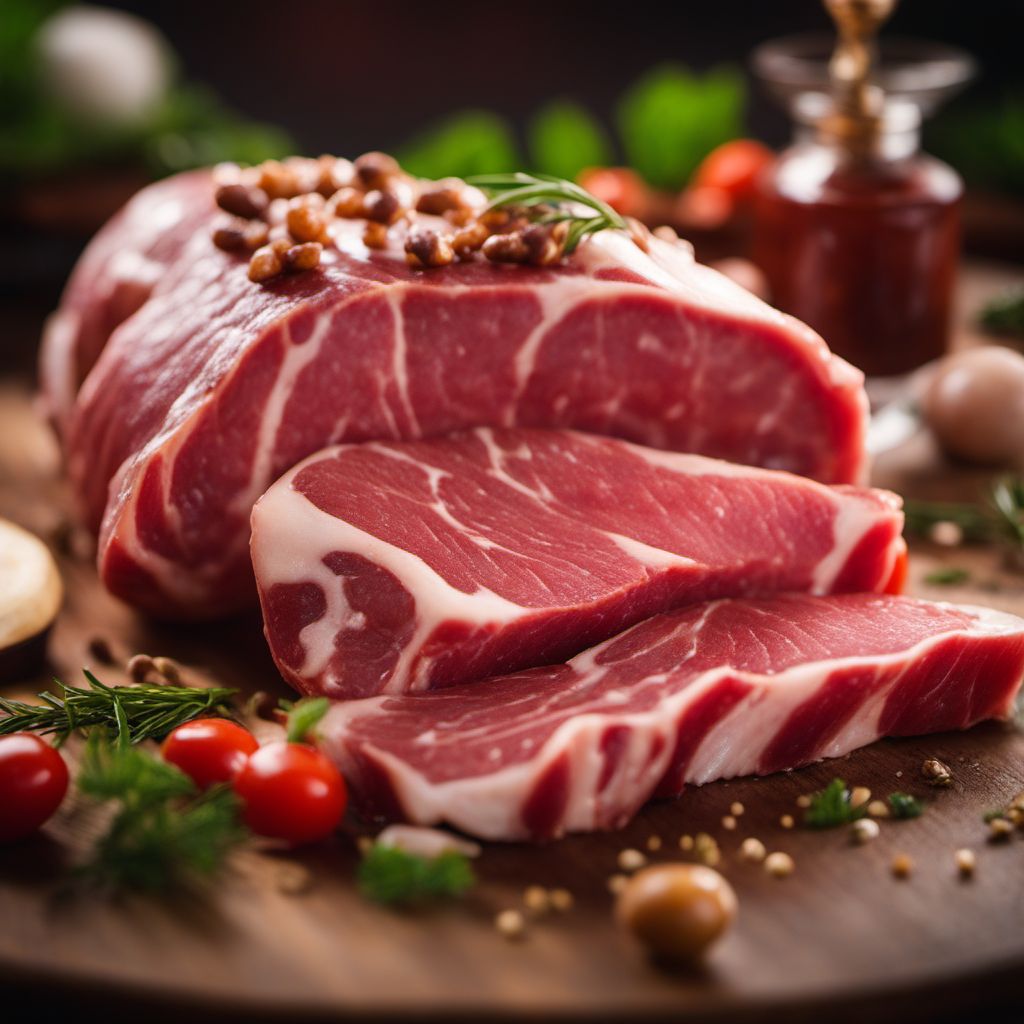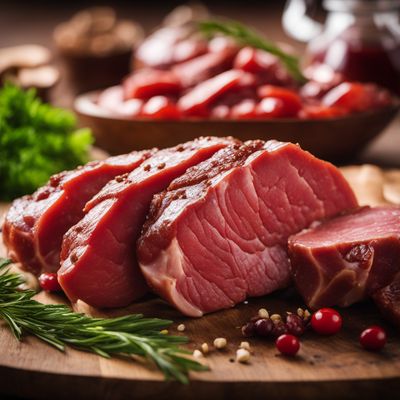
Ingredient
Deer, fallow fresh meat
The Delicate Delights of Fallow Deer Meat
Fallow deer meat is characterized by its lean and tender nature, making it a popular choice among meat enthusiasts. It has a deep red color and a fine grain, with a mild and slightly gamey flavor. The meat is known for its tenderness, making it suitable for various cooking methods such as grilling, roasting, or braising. Its delicate texture and rich taste make it a favorite among chefs and food enthusiasts alike.
Origins and history
Fallow deer, native to Eurasia, has a long history of being hunted for its meat. It was introduced to various parts of the world for hunting purposes and has since become a valuable culinary ingredient. Fallow deer meat has been enjoyed for centuries, with its cultural significance varying across different regions. In some cultures, it is considered a delicacy and is often associated with special occasions or festive celebrations.
Nutritional information
Fallow deer meat is a nutritious choice, providing high-quality protein, essential vitamins such as B12 and niacin, and minerals like iron and zinc. It is also relatively low in fat and calories, making it a healthy option for those conscious of their dietary intake.
Allergens
Fallow deer meat does not typically pose any known allergens, but individuals with a history of meat allergies should exercise caution.
How to select
When selecting fresh fallow deer meat, look for cuts that are firm and moist, with a vibrant red color. Avoid meat that appears discolored or has a strong odor. Additionally, choose cuts that have a good marbling of fat, as this contributes to the tenderness and flavor of the meat.
Storage recommendations
To maintain the freshness and quality of fallow deer meat, it is best to store it in the refrigerator at a temperature below 40°F (4°C). It is recommended to use the meat within 2-3 days of purchase or freeze it for longer storage. When freezing, ensure proper packaging to prevent freezer burn.
How to produce
Fallow deer meat is typically sourced from hunting or game farms. To produce fallow deer meat, one would need to obtain the necessary permits and licenses for hunting or establish a game farm where the deer can be raised and managed.
Preparation tips
Fallow deer meat can be prepared using various cooking techniques. For tender cuts, such as the loin or tenderloin, grilling or pan-searing is ideal to retain its natural tenderness. For tougher cuts, such as the shoulder or shank, slow cooking methods like braising or stewing are recommended to break down the connective tissues and achieve a tender result. It is important to avoid overcooking the meat to preserve its delicate flavor and texture.
Substitutions
Venison or elk meat can be used as suitable substitutes for fallow deer meat, offering a similar gamey flavor and tender texture.
Culinary uses
Fallow deer meat is commonly used in various culinary applications. It can be enjoyed as a standalone dish, grilled or roasted to perfection. It is also a popular choice for stews, sausages, or ground meat for burgers. The unique flavor of fallow deer meat pairs well with aromatic herbs, fruits, and earthy ingredients, allowing for a wide range of creative dishes.
Availability
Fallow deer meat is commonly available in regions where hunting or game farms are prevalent. It can be found in countries such as the United States, United Kingdom, Germany, and New Zealand.
More ingredients from this category

Reindeer meat
The Arctic Delicacy

Deer, minced meat
Venison: The Lean and Flavorful Game Meat

Deer, red fresh meat
The Game-Changer: Red Deer Meat

European moose meat
The Majestic Delicacy: European Moose Meat Unveiled

Wapiti elk meat
The Majestic Delicacy: Wapiti Elk Meat

Roe deer meat
Delicate Delight: Roe Deer Meat